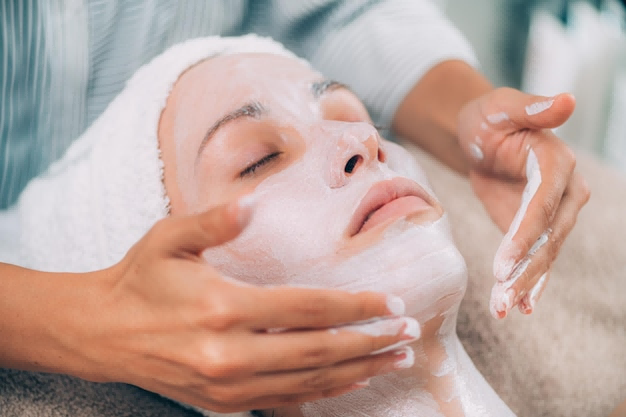The Correct Usage of Epidermal Anesthesia Cream is A Must See for Beginners

1. Why Do I Still Feel Pain After Applying Anesthesia Cream Before Getting A Hydro Injection?
Firstly, we need to understand a basic principle: the function of anesthesia cream is to block the pain nerve endings on the outermost layer of the skin, which cannot penetrate 100% into the dermis layer. And the level of action of the hydro injection is precisely in the dermis layer.
Therefore, the pain mainly comes from the following aspects: mechanical stimulation of needle penetration: even if the epidermis is anesthetized, when the needle penetrates deeper tissues, you can still feel a sense of “penetration”, which is sometimes interpreted by the brain as “sharp pain” or “swelling pain”.
The pushing sensation of medication injection: Hydro injection push nutrients such as hyaluronic acid into the skin, and when the medication spreads in the dermis layer, it produces pressure and swelling pain, which cannot be eliminated by ointments.
Failure or uneven application of anesthesia cream: If the anesthesia cream is not applied for enough time, thickness, or the product itself is ineffective, it will result in insufficient depth of anesthesia, and the pain will naturally be more pronounced.
Individual physical differences: Everyone’s pain threshold and skin thickness (especially in different areas of the face) are different. Areas with thinner skin, such as around the eyes and lips, usually experience more pronounced pain.
Psychological factors: Fear and tension towards “needles” can amplify the feeling of pain. (Relax your mindset and trust your operating physician.)
Physiological period: During the physiological period and the days before and after it, women’s tolerance to pain will decrease, so try to avoid this time period as much as possible.
2. How to Use Anesthesia Cream Correctly? Maximizing Pain Reduction
To make your water and light experience more comfortable, please be sure to follow the following steps:
2.1 Preliminary Preparation
Skin test: If you are using a certain ointment for the first time, be sure to do an allergy test on the inside of your forearm or behind your ear. Wait for 15-20 minutes to confirm that there are no allergic reactions such as redness, swelling, or itching before use. Clean the skin: Thoroughly clean the face before treatment and do not apply makeup. Oil and dirt can hinder the absorption of sesame paste and affect its effectiveness.
2.2 Application Process (key!)
Thick application, not thin coating: This is the most important step! Take a sufficient amount of anesthesia cream to completely cover your skin tone and prevent you from seeing your pores (with a thickness of about 2-3 millimeters, like applying a thick layer of cream). After covering, medical cling film/hemp film must be applied. A sealed environment can increase the drug penetration efficiency by 40% and avoid the volatilization of active ingredients. Being stingy with dosage is the primary reason for poor anesthesia effectiveness.
Partition coverage: Apply evenly and thickly to different areas such as forehead, cheeks, chin, nose, etc., ensuring that all areas that require treatment are covered.
Avoid sensitive areas: Avoid applying to the skin and mucous membranes around the eyes, lips, and inside the nasal cavity to prevent irritation.

2.3 Waiting Time
Sufficient time: It is generally recommended to apply for 20-30 minutes. The time is too short for the effective ingredients to fully penetrate. Prolonged exposure (over 1 hour) may lead to excessive hydration of the skin, which in turn increases the risk of sensitivity.
2.4 Cleaning Process
Thoroughly remove: After the time is up, use a soft damp cloth or cotton pad to gently and thoroughly wipe off all the hemp paste. Any residue may enter the skin with the needle during treatment, causing irritation or allergies.
2.5 Subsequent Relief
After treatment, the skin will have varying degrees of redness and burning sensation, which is normal. The organization will usually apply a professional medical repair facial mask for you, which can greatly relieve discomfort, calm and cool down.
3. Precautions for Using Anesthesia Cream
3.1 Regarding Anesthetic Allergies
Firstly, inquire about the patient’s allergy history. Those who have allergies to lidocaine, local anesthetics, or other matrices should avoid using anesthetics as much as possible. Using a restorative agent before applying anesthesia can effectively prevent allergies.
3.2 How to Avoid Anesthesia Cream Allergy?
- One week before applying hemp, intensively replenish water, apply more facial mask, and use water replenishing face cream every day.
- First, repair the skin with damaged keratin by using products containing ceramides, using amino acid cleansing products, and washing your face with water as much as possible. Reduce the frequency of makeup.
- Apply a thin layer of Vaseline to areas that are prone to redness when applying anesthesia, such as around the mouth, cheekbones, and eyes.
- Choose safe and regular anesthetics, apply them in different areas, and first apply to the areas that are tolerant.
- Reduce the duration of anesthesia application for sensitive muscles and do not cover them with plastic wrap.
4. How to Repair Anesthesia Cream Allergy?
Allergies to topical ointments can be relieved by applying ice to the affected area, and combined with oral or topical medication by a doctor, the symptoms of allergies can be effectively alleviated.
4.1 Ice Compress
Applying ice to the local area can promote capillary constriction, reduce exudation, and help restore swelling as soon as possible. However, it is important to avoid prolonged use to prevent local discomfort.
4.2 Oral Medication
Including loratadine, cetirizine, etc., it can have anti allergic effects, alleviate the redness, swelling, and pain caused by allergy to topical ointments, and quickly relieve the symptoms of allergies.
4.3 External Medications
Epidural ointment is usually applied to the surface of the skin and can provide local anesthesia. If allergic symptoms occur, it can cause itching in the affected area. You can use calamine lotion to help alleviate the itching symptoms.
5. Regarding the Situation of Anesthesia Burns
If the patient is burned by anesthesia, the residual anesthesia should be removed in a timely manner, and cold compress or spray should be applied promptly. If the skin symptoms are mild, continue to instruct the patient to use physiological saline cold compress, and also apply topical corticosteroid ointment such as dexamethasone cream and fluticasone propionate cream.
Antibiotic ointments such as mupirocin ointment and fusidic acid cream, as well as oral intake of some vitamin C, have certain benefits for skin healing. If patients still have symptoms of infection after skin burns, systemic use of glucocorticoids and antibiotics is needed for treatment.
A successful and comfortable water light experience is the result of the combined action of the product, operating technology, and postoperative repair. The correct use of sesame paste is the most important pre preparation you can make for yourself. I hope this article can help you eliminate fear and become beautiful with peace of mind!





